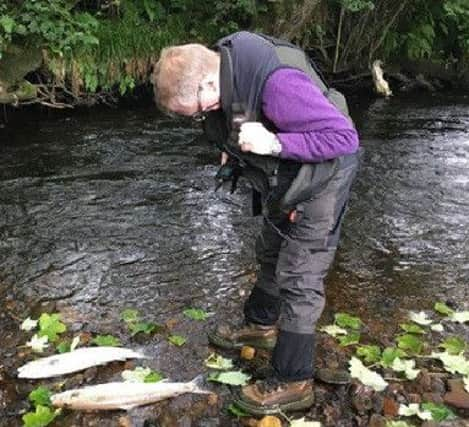Faughan fish kill: Liquid silage waste suspected


The Environment Agency said today they were still trying to determine the scale of the fish kill following an environmental disaster along the River Faughan.
Silage effluent is liquid waste resulting from crops which are being harvested for food.
Advertisement
Hide AdAdvertisement
Hide AdThe NIEA said they were first alerted to the problem on Monday evening.
A spokesman for Department of Agriculture, Environment and Rural Affairs, confirmed that the fish kill is now deemed to be “in excess” of 1,000.
A spokesperson said: “The Northern Ireland Environment Agency (NIEA) is continuing to investigate a major fish kill near Claudy.
“Staff from Loughs Agency, who are leading this investigation, are working closely with NIEA to quantify the number and species of fish affected, and the cause, which is suspected to be silage effluent.
Advertisement
Hide AdAdvertisement
Hide Ad“The latest available figures are that in excess of 1,000 fish of a range of species have been killed over several kilometres of river. Assessment of the fish kill is still ongoing.
“Staff from Loughs Agency have commenced electro-fishing and further detailed investigations to help to narrow the area from where the pollution started, whilst NIEA staff are carrying out a river walk try to source the cause of the pollution.”
He added: “If anyone has additional information about this pollution incident they can report this through NIEA’s 24-hour Pollution Hotline (0800 807060).”
Officials from the British Department for Environment, Food & Rural Affairs state that silage effluent “can cause major problems if it enters a watercourse”.
Advertisement
Hide AdAdvertisement
Hide AdThe Department’s website states: “Because silage effluent is so highly nutritious it is also dangerous as a pollutant if it enters our streams, rivers or lakes. Micro-organisms and algae present in waterways will feed on the effluent causing a reduction in the oxygen content of the water.
“Fish life literally suffocates from a lack of oxygen in waterways contaminated with silage effluent.
“Public and domestic water supplies can also be seriously damaged if contaminated with silage effluent. For example, the effluent from just 100 tonnes of silage has the same polluting potential as the daily sewage output of a town of 25,000 people.”